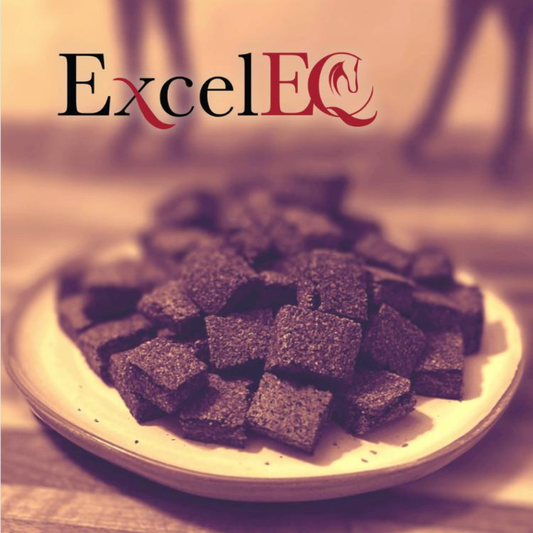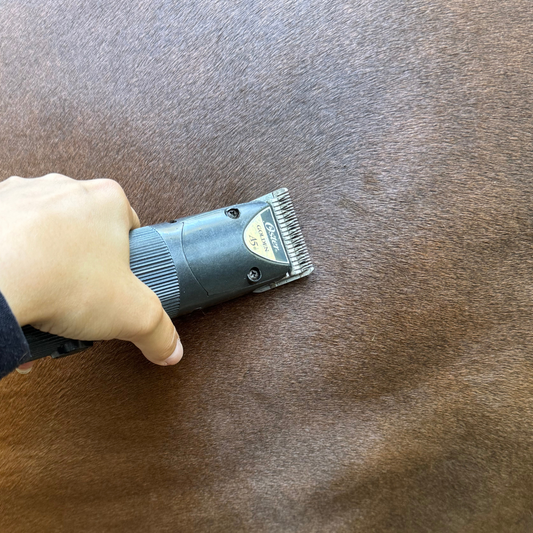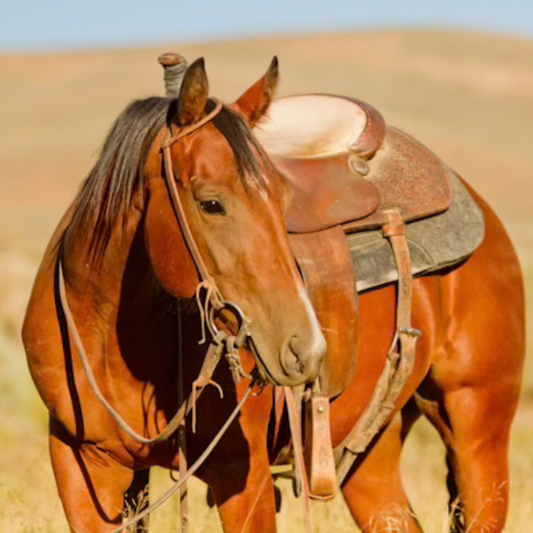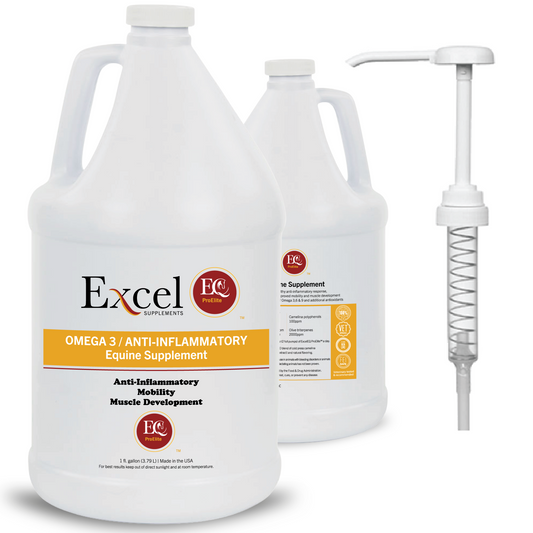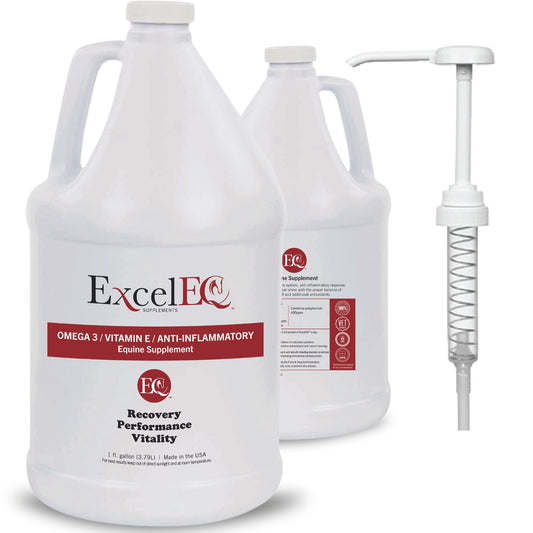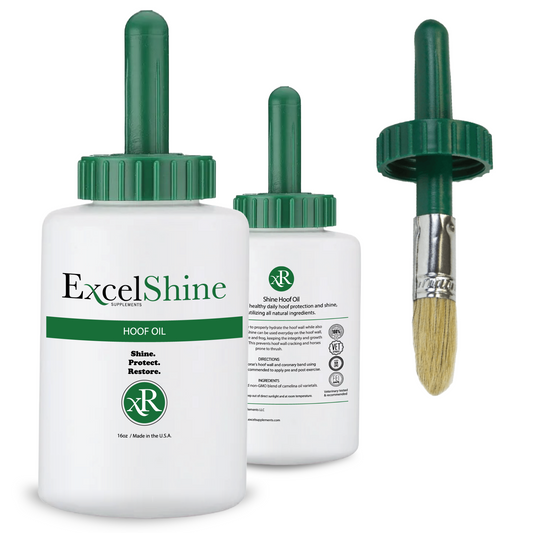Understanding and Managing Equine Stomach Ulcers
Share
One of the most significant issues in performance horse ownership is equine stomach ulcers. These ulcers impact a horse's health and performance and are a common concern across all equestrian disciplines.
Introduction to Equine Gastrointestinal Health
Understanding the gastrointestinal health of horses is crucial for both horse owners and managers. Horses, particularly those in training or competition, often face gastrointestinal issues such as gastric ulceration. While stomach ulcers are commonly identified through gastroscopy, hindgut conditions can be more challenging to diagnose. Recent research indicates that hindgut pathology may be as prevalent as stomach ulcers in horses.Despite the lack of absolute prevention or cure, it is crucial for equine professionals to stay informed about the negative effects of stomach ulcers and adopt preventative and diagnostic approaches.
Types of Stomach Ulcers in Horses
Foregut Ulcers
The foregut houses three primary types of gastric ulcers:
- Squamous Ulcers: These affect the upper third of the horse’s stomach.
- Glandular Ulcers: These target the lower part of the stomach.
- Pyloric Ulcers: These occur at the stomach's opening into the small intestine.
Hindgut Ulcers
Ulcers in the hindgut are typically associated with right dorsal colitis, which affects the upper right section of the colon. This condition is frequently linked to the use of Nonsteroidal Anti-Inflammatory Drugs (NSAIDs) and hindgut acidosis. Hindgut acidosis results from large amounts of undigested simple carbohydrates reaching the hindgut, leading to excessive lactic acid production. The excess lactic acid damages the gut lining, making it prone to ulceration.
Causes of Equine Stomach Ulcers
Stomach ulcers in horses are commonly caused by stress and dietary changes. Unlike their wild counterparts, domestic horses face reduced turnout time and limited access to forage. In the wild, horses graze continuously on available grasses, which helps regulate stomach acid production. In contrast, domestic horses often have restricted forage supplemented with grain, leading to periods of an empty stomach and excessive acid. Other factors contributing to ulcers include frequent travel, rigorous exercise, parasitic infestations, and NSAID use.
Symptoms of Stomach Ulcers in Horses
The symptoms of stomach ulcers can display as general behavioral issues. Key indicators include:
- Girthiness and sensitivity in the flank area
- Difficulty with bending, collecting, and extending
- Soft or loose manure
- Vices such as weaving, cribbing, or wood chewing
- Blood in manure
- Low-grade anemia
- Weight loss and poor body condition
- Dull coat
- Irritability during riding, tacking, or grooming
- Back pain unresponsive to local treatment
- Loss of appetite
Diagnosing Stomach Ulcers in Horses
Diagnosing stomach ulcers can be challenging. Veterinarians may use provisional medication to identify potential ulcers, but the most accurate diagnosis comes from a gastric endoscopic exam. This procedure requires a 12-hour fast before examination and is effective for assessing foregut ulcers. For hindgut ulcers, diagnostics are less straightforward. Ultrasound can visualize up to 15 inches into the abdomen but is less definitive. A Ph test of the manure can help indicate an acidic digestive tract, with a normal Ph level being 6.8 and levels below 6.5 suggesting acidity.
Hindgut Ulceration: Background and Diagnosis
Hindgut ulcers in horses can be diagnosed through several methods, including:
- History and Clinical Signs: Observing symptoms and medical history.
- Blood Work: Changes in blood tests may indicate gastrointestinal issues.
- Abdominal Ultrasound: Imaging to assess internal conditions.
- Fecal Occult Blood Testing: Detects hidden blood in manure samples.
Fecal Occult Blood Testing for Horses
The Succeed Equine Fecal Blood Test from Freedom Health LLC is a valuable tool that combines tests for fecal hemoglobin and albumin. Abnormal levels of these substances can indicate gastrointestinal issues, such as gastric or colonic ulceration.
- Albumin: A protein that indicates bleeding injuries, often associated with the "leaky gut" syndrome in the hindgut.
- Hemoglobin: A marker of whole blood, which can originate from any part of the gastrointestinal tract.
Treatment and Prevention of Horse Ulcers
With proper treatment and preventative measures, stomach ulcers in horses can be effectively managed and cured. Treatment options should be discussed with a veterinarian to ensure a tailored approach. Prevention is crucial; understanding the underlying causes of ulcers and implementing preventive measures can significantly reduce recurrence. Maintaining a knowledgeable barn staff to recognize early signs of ulcers and understanding the horse’s natural digestive needs are key to promoting equine health.
Management Strategies for Hindgut Ulceration
Effective management of hindgut ulceration includes:
- Avoiding NSAIDs: Non-steroidal anti-inflammatory drugs can exacerbate ulcers.
- Frequent Low-Bulk Feedings: Helps reduce irritation and promotes healing.
- Reducing Inflammation: Essential for recovery.
- Managing Stress Levels: Stress can worsen gastrointestinal conditions.
Using Fatty Acids for Hindgut Ulceration
Omega-3 fatty acids are beneficial for gastrointestinal health due to their anti-inflammatory properties. They also reduce sugar and starch in the diet. ExcelEQ ProElite, a camelina oil-based product, offers excellent bioavailability of omega-3 fatty acids. Many horse owners use ExcelEQ ProElite to manage and prevent gastrointestinal issues.
Excel Supplements ExcelEQ ProElite™ & Ulcers
Excel Supplements’ ExcelEQ ProElite™ is proven to aid in the prevention of stomach ulcers, supporting a healthier and happier performance horse. Read more about ExcelEQ ProElite's impact on gastric ulcers in our research study "ExcelEQ ProElite Oil Therapy and Gastrointestinal Health Using Stall Side Fecal Occult Blood Testing".
Sources:
- AAEP: Equine Gastric Ulcers
- The Horse: Gastric Ulcers
- Veterinary Partner: Equine Gastric Ulcers
- Equus Magazine: Ulcers
- University of Kentucky - Gluck Equine Research Center: Equine Gastric Ulcers
- Journal of Veterinary Internal Medicine: Gastric Ulcers

